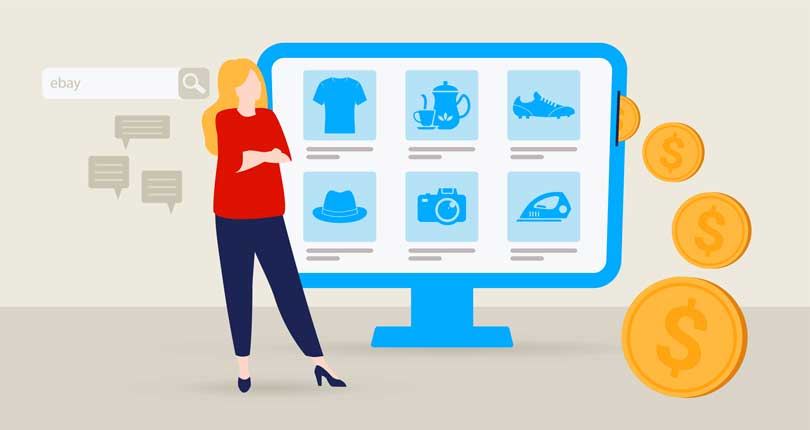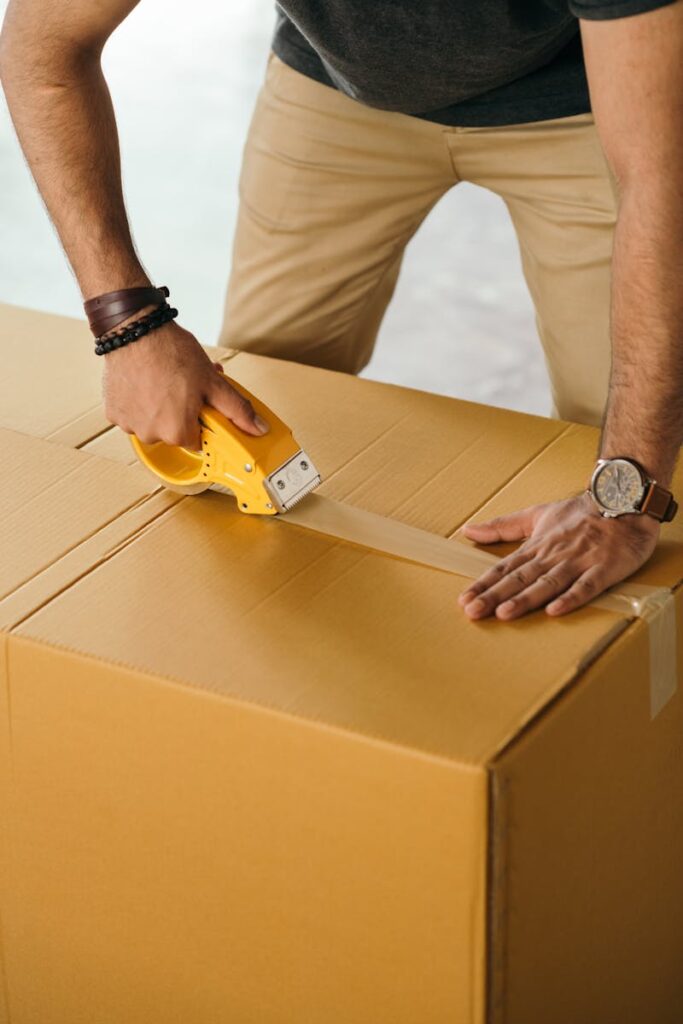
Summer’s here, bringing the buzz of travel and fun. Trips to parks and concerts feel appealing right now. You probably feel like shopping for new clothes. But maybe save cash before you buy anything else. Try launching a summer side hustle instead to help pay costs. Some people even make over $100,000 from their part-time jobs. Imagine finding something you love that makes you money. It is quite possible. For many people, items they already own are the simple answer.
Online reselling changed everything because of the internet. It is more accessible today than before. You can sell furniture or old items from your younger years easily. Digital marketplaces connect you with buyers looking for things. The secondhand goods market is vibrant now and keeps growing. One area stands out for its energy and how easy it is to start. Clothing resale has become a major force in this market. According to ThredUp, this sector grew 15 times faster than traditional clothes retail in 2023. The U.S. secondhand apparel market could reach $73 billion by 2028. Globally, this market might hit $350 billion soon. This is not just a trend; it’s how many people might shop.
So what precisely is reselling? It means selling something again, simply put. You obtain items, usually at a low price, then sell them for profit. Various channels exist for this process now. These include online places like eBay or Poshmark, too. You could even open your own digital store online. Traditional thrift stores work for this model also. Many successful resellers start by clearing out their own possessions first. This turns clutter into valuable cash you can use. If you lack interest in making products but spot value, reselling is for you. It typically asks for low startup costs and has low entry barriers for people.
The potential earnings are what people wonder about most. How much money can somebody make reselling? The answer changes a lot, like most ventures. It really depends on what items you choose to sell. Where you source your items plays a big role in profits. The time and effort invested significantly impact results as well. Someone turning old clothes into upcycled styles usually earns more. This is compared to someone just listing used items as-is. Spending time seeking out rare furniture finds might yield higher income. Casually clearing out old belongings from your basement is different. Earnings reported cover a wide range for people on platforms like eBay. Some resellers make a few thousand dollars monthly selling used items. The potential is certainly there if you approach it smartly.

Consider how a smart item choice makes a difference for sellers. ThredUp showed an interesting comparison for people. A casual Zara dress might get $4.45 on their platform, perhaps. But a used Free People cocktail dress could sell for $60.44. They estimated this price in December 2024. This shows research matters in finding valuable items. Choosing items that hold value for resale is very important. The really good news about reselling is its huge flexibility. You control the time, effort, and initial money put in. You can start small, listing just a few items from your personal wardrobe. Scale up gradually as you get experience and see good results appearing.
For many, the best starting point is closer than they imagine. It is literally inside their own house or apartment. Look through your closet, your basement storage area, or even that locker. Items are likely just sitting there unused. Someone else would happily pay money for these things while waiting. Items might be watching you from inside your closet, as the context points out. The dress worn one time for a wedding is there. The blazer purchased for a past interview sits unused. These things get silently passed over for comfy everyday clothes. This presents exactly the opportunity you need. You can turn those perfectly fine castoffs into spendable cash. It is so easy to allow that bag of unwanted clothes to become a permanent item on your list of things to do. But knowing how to effectively sell them is a skill that pays off. Whether items are lightly used or never worn, selling them secondhand provides reliable extra cash for years.
Becoming savvy in the secondhand market is particularly helpful right now for your money. It offers a financial cushion against upcoming economic changes we all face. Tariffs will likely affect clothing costs across different price points. This includes both budget-friendly options and luxury clothing items, too. People look for ways to save money without giving up shopping completely. The easiest way to handle spiking clothing costs is to avoid looking for brands made domestically. You simply buy clothing that already exists in the system. If an item is listed in someone’s online shop, it avoids new tariffs. These tariffs increase costs for imported goods dramatically.

Let us talk about the tariffs for a short time here. They are shaping the retail environment significantly now. If you guessed where most U.S. clothing is made, you would guess overseas. A 2024 report estimated the U.S. imports 97 percent of its clothes and shoes. This figure comes from other countries across the world. This means almost all clothing and footwear sold here will likely cost more. Price increases are expected to be nearly certain for consumers. However, the exact duration and price rise depend on the tariff rate. This rate ties to the country where the garment originated from. A large part of that 97 percent comes from Asia, including China. Imports from there faced a tariff rate over 100 percent on April 9th. This includes items from Shein and Temu, which ship from China directly. A recent action also closed a loophole before allowing cheap shipments bypass other trade taxes.
This situation creates big problems for retailers whose whole business model rests on offering very low prices to buyers. It is much harder for them to keep those cheap prices for shoppers. As a result, many shoppers may naturally begin moving away from fast fashion habits. This shift was arguably needed anyway for various reasons. Extremely low prices in fast fashion result from unfair wages for clothing makers usually. Supply chains sometimes involve child labor, sadly. Beyond human issues, making low-quality polyester items harms the environment greatly. The fast fashion industry adds huge amounts to landfills each year. It accounts for nearly 10 percent of global carbon emissions total. That is like one garbage truck of clothes burned or dumped every second. Just one company, Shein, produced more carbon dioxide in 2023. This amount exceeded four combined coal power plants operating. Choosing secondhand is a powerful way to work against this cycle of harm.
Maybe you thought about reselling but felt unsure about trying. You might think, “No one wants my old things.” This idea is not true at all! The huge popularity of thrifting proves people buy used clothes. Many people are more than willing to purchase and wear previously owned garments. For those lacking time or desire to search racks at Goodwill, online reselling offers convenience. There absolutely is a market for items consignment stores turned down. Places like Plato’s Closet or Buffalo Exchange reject things sometimes.
And contrary to a common idea, you do not need rare vintage items to succeed online. Think about finding gently used Lululemon leggings for half price easily. This is appealing, especially since new ones are expensive and likely cost more now. Tariffs will affect their prices too, unfortunately. Or imagine being a wedding guest facing gift costs already. They would love a Princess Polly dress worn one time by another person. Finding it available for $50 less than retail price is great. These are real examples driven by what buyers want today.
I remember the pure joy of finding Vans platform SK8-Hi shoes on Depop in my size. I looked everywhere else for them unsuccessfully. They were always listed as “out of stock”. The light scuffs on them meant nothing to me, really. Finding that hard-to-get item finally was all that mattered. That seller just decluttering items they did not want improved my day greatly. This is the essence of secondhand savviness for buyers and sellers. If an item sold out on the brand’s site, it might be waiting quietly somewhere else. Look for it on a selling app instead. Do not let a bad experience at a stuck-up thrift store discourage you ever. Your own wardrobe has value to other people.
While relying on fast fashion feels tempting when a shirt costs $10. It comes with fast, free shipping frequently, too. Remember many secondhand items are just as affordable to purchase. Some might even cost less money overall. The key difference is secondhand takes an item already existing. It gives it a new, useful life for somebody else. This prevents it from potentially ending up in a landfill somewhere. And let us be realistic about quality for a minute. That suspiciously cheap new shirt is not higher quality than one worn a few times only. Moving towards secondhand shopping is not just about saving money. It is a positive choice for the planet we all share.
Starting with reselling is surprisingly quite straightforward now. The first important step is deciding what things you will sell first. Then figure out where you plan to find your items consistently. You might spend time exploring yard sales or estate sales happening near you. Browsing online listings like Craigslist for things you could find is another option. Thrift stores such as Goodwill are classic places to discover items for flipping. Look out for sample sales or surprise sales events, sometimes happening suddenly. Check clearance sections at retailers like Nordstrom Rack or TJMaxx. You might find items here to resell later at a profit. Another choice, needing a different business model, is dropshipping things from cheap overseas retailers. AliExpress is one example of such a retailer used often. We heard people make up to $1,000 extra per month doing this properly. However, if starting with no initial money, your own home is easiest. Look in your closet, basement, or storage space now.

A helpful tip for choosing items to sell is starting with what you know well. If you understand designer denim really well, for instance, that helps. You can easily find good deals on jeans you can resell for higher prices. Alternatively, research items known for giving big profit margins to sellers. Dedicate yourself to learning about those specific items instead. Either method works well for beginners. Having knowledge about what to seek out helps significantly in the reselling game. Once you know what items to focus on, building your inventory is easier. The next crucial step means deciding where you will list and sell them. This needs understanding of available platforms. Choose the best place for your specific goods to sell well.
Okay, you have caught that reselling bug already. People look for used items more these days now. Economic changes have made secondhand shopping very popular lately. The first part explained clearly why this is such a good idea. Now let us cover how you actually sell your things online. You need to pick platforms and ship stuff out finally.
Choosing where you list items online is one very important first decision now. This choice you make is certainly very important indeed for sales. The platform you pick needs to match your specific goods really well. Suppose you have high-end designer handbags sitting unused, you know. A platform like TheRealReal could be a brilliant choice for them. They handle curated luxury goods specifically aimed at rich buyers. This attracts serious buyers who will pay premium top dollar.
But what if your items are more varied than luxury bags? Maybe you are just starting with clothes right from home now. Depop, Poshmark, and Mercari are three main clothing apps to know. These platforms are very popular and quite user-friendly to use. They make excellent starting points for beginners learning the game. Each one has its own vibe and typical user base type. They suit selling brand-name clothes, trends, and everyday things.

Beyond clothing apps, you find broader marketplaces for your specific things. Sites like eBay and Amazon sell almost anything needed online, really. They have very massive user bases looking for stuff daily now. This works great for electronics, books, or household items too, you see.
If you got old retro Barbie dolls, these sites offer wide reach. Swappa caters specifically to electronics items you sell very quickly. Used books are popular resale items that are always selling fast too.
Creating your own online space is also an option for selling. You can bypass marketplaces to build your own brand identity quickly. Services like Shopify and BigCartel let you build a great personalized site. You get your very own domain name for your store. This creates a more independent feel for buyers visiting. These platforms come with fees you must pay sometimes, though. They might take less cut per sale per item overall.
Each approach has its own perks and drawbacks you must carefully consider. You need to weigh these very carefully before deciding which platform to use now. Online platforms give instant access to potentially many buyers quickly seeking things. But they take a big, significant cut of your overall sales profits daily. These fees always eat into your potential earnings, you know. Selling direct to stores gives you quick cash often there too. But you get lower prices than selling online usually now, definitely.
Knowing selling prices is very critical for maximizing your earnings. This helps you know what an item should sell for online. It needs to decide what to purchase for resale first, okay? Ensure you are sourcing items that always give a decent profit now. Profit after fees and other costs matters very much. This research is like a secret map to buried treasure.
You need to know what treasure looks like to find it easily. On Poshmark, follow top sellers for good ideas there. See what brands and types of items move quickly. Also, at what prices do items sell fast?
Once a platform is picked, make your items shine online now. Crafting compelling listings is the next key step needed here. High-quality photos are certainly non-negotiable for your sales. You need clear, well-lit images showing item details always clearly. Include front, back, tags, and close-ups always for them all. Show any minor flaws clearly in photos here for transparency.
Your description needs to be detailed and engaging for people too. Include essential info like brand, size, and material inside. List actual measurements if you can do that always. Note the item’s condition and any features well for buyers. Add a touch of personality sometimes if you want. Making listings pop is less work than you thought. Focusing on these details is a smart investment of your time.

Pricing your items is a balancing act for you now. Your price research is very essential here always, really. Consider condition, rarity, original price, and current demand too. Factor in platform fees and sourcing costs also needed. This ensures you are making a profit easily later on. You might price higher to allow for offers, maybe for buyers. Price it firmly if it’s a hot, popular item selling fast.
Navigating sales involves interacting with potential buyers daily now. Get ready to deal with lowballing offers online for items. It’s a very common part of online resale platforms today. Don’t take lowball offers personally, you know, ever though. You can accept, counter, or just politely decline those offers. Always have your minimum acceptable price in mind before this happens. Base it on your costs and desired profit goals fully later.
Once an item sells, shipping is the next big step now. Get familiar with the shipping process quickly; please do that. Platforms often have integrated shipping options available for you. Maybe you get discounted rates or prepaid labels to use. These are based on the weight of the package now for figuring cost. You need packaging materials for shipping things safely also.
Saving your boxes and mailers will save you money later on. Reusing packaging cuts expenses and helps the environment too, always really. To accurately weigh the package for the correct label you need to use. Else risk package return or extra charges later if it’s wrong. Pack items carefully for good arrival condition for buyers. Shipping quickly always gives crucial customer service ratings. It gets positive buyer reviews fast and is often there for you.

Understanding selling fees is always a vital puzzle piece. Different platforms have different fee structures for sellers, you know. Some take a percentage of the final sale price daily sold. Others have listing or subscription fees sometimes too. Factor fees into your overall pricing strategy always, you know. This ensures profitability after paying everything off that was needed first. Platform cuts influence what you sell where easily later on.
Managing your business expenses has other costs also, now you know. Buying shipping supplies could be one cost needed later sometimes. Accounting software tracks income and expenses well and is always needed. Suggests a business credit card with rewards for spending now too. This helps manage expenses and earns back money for you. An example is the Ink Business Unlimited® Credit Card they mention. It offers unlimited 1.5% cash back on all purchases made.
The human element of reselling is important, you know. Providing good customer service is always key for good sales. Respond promptly to buyer questions and be helpful, please. Ship quickly after the sale happens for them. Resolve issues that arise; they are always there. This always gives crucial customer service. It gets positive buyer reviews fast there often.
As business grows, you might expand your offerings, maybe. Meet changing market demands; they are always there now. Modify types of items you sell too, please, sometimes. Started with clothes; find demand for home goods maybe later. Brands or styles popular earlier sell poorly now, perhaps. You need to adapt to market changes quickly always for sales. Staying adaptable is important for long-term success overall, definitely.
Mastering online resale is a continuous learning process always needed. You need to choose the right venues and present items well for buyers there. Manage transactions and logistics efficiently now for yourself. Build strong customer relationships through excellent service, always there for them. It is a practical, hands-on side hustle for many people you know. With effort and strategy, it’s a reliable income source now, maybe just. Reselling is one of the best side hustles for good reason, always really.
Related posts:
4 ways to earn extra cash this summer, from people whose side hustles bring in $100,000 or more a year
How To Get Started as a Reseller: What and Where To Sell
As tariffs invade the apparel market, selling your clothes online is the move — here’s how




